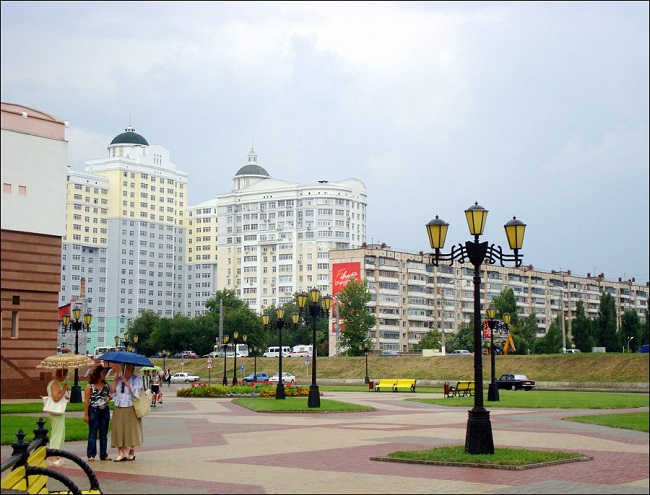
Young Russian architects want to "humanize" Russian cities
 |
Belgorod - Next to the sad rows of Soviet buildings, so typical of Russia, the new floating embankments stand out in Belgorod. These are the work of young Moscow architects who have ventured into Russian regions to make them livelier, reports the AFP agency.
For decades, the banks of the Vezelka River flowing through Belgorod were abandoned. "Access to the water was difficult. In places, there was mud," says thirty-year-old architect Jezi Stankevic, the author of the transformation of the banks in this city of 400,000 inhabitants, located 600 kilometers south of Moscow.
In 2017, Russian authorities entrusted the prestigious construction agency Strelka KB with the reconstruction of 40 cities in the country, home to a total of 28 million people. According to the agency, this is the largest urban renewal project in post-Soviet Russia.
In Belgorod, an elegant wooden amphitheater forms a transition to the water, explains Stankevic. The floating embankments hidden among patches of reeds have become a popular meeting place for the youth. Today, it's possible to walk several kilometers along the Vezelka, where spaces for sports and parks for dogs have emerged.
And this is just the beginning: in the end, about 20 kilometers of walking and cycling paths will be built here. Strelka KB completed the central part and consulted with local authorities and architects for the rest.
There are already doubts about the future regular maintenance of these places, but since they were opened in November 2017, they have enjoyed popularity among both students from the nearby university and young mothers with their children.
"It's really nice here, unusual. We are in the city center, but we don't hear the noise of traffic. I would even say it's calming," rejoices thirty-eight-year-old Elena, who is basking in the last rays of the spring sun.
While such a riverfront transformation is common in Europe, it is almost an exception in a Russian provincial city. Many cities began to decline after the fall of the USSR as businesses closed and the educated part of the population left. Local authorities, deprived of tax revenues, lacked the means for renewal.
Since 2010, the Russian government has spent billions of rubles on the modernization of Russian cities, and in 2017 a federal program for the renovation of public spaces was launched, with 14.6 billion CZK allocated for it.
Last March, Vladimir Putin ordered the Russian government to double state spending on creating a pleasant urban environment.
This is completely new in Russia. The quality of life is not a very clear concept for Russians, says Darya Paramonova from Strelka. According to her, Russian cities, which mainly developed during the Soviet era, were not built to meet the needs of residents, but for productivity.
"Today we say that it depends on humanity," emphasizes Paramonova. This is evidenced by one of the fundamental points of the program: residents are invited to express their opinions on projects at public meetings or via the internet.
Darya Paramonova does not hide that the existence of this project owes much to the success of another city renewal program that transformed the appearance of Moscow before the World Cup in football over three years (2015-2018).
The program was controversial due to its cost and allegations of corruption, but Muscovites voted for these changes and quickly forgot about three years of giant works that disrupted their lives.
Other cities, such as Yekaterinburg, Vladivostok, Grozny, and Novosibirsk, are preparing for the renewal of public spaces.
"Today, all cities strive to retain their human capital and are trying to create living conditions that will prevent residents from leaving for Moscow or elsewhere. We have to do it too," says Evgeny Glagolev, deputy governor in charge of urban planning.
The English translation is powered by AI tool. Switch to Czech to view the original text source.
0 comments
add comment










